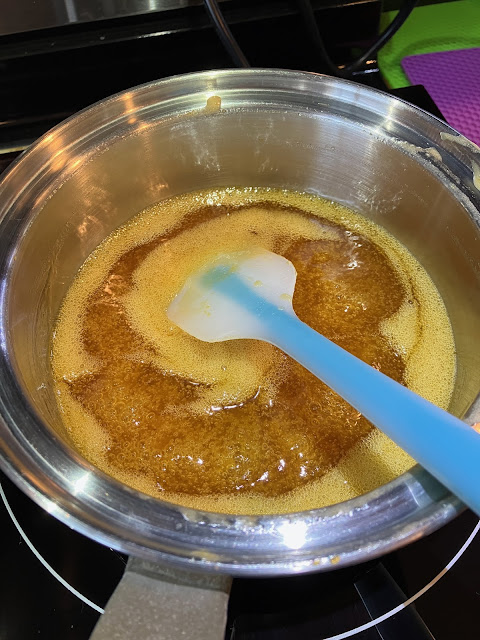So it used to be that jams were, for the most part, made for purpose. Fruit would be minced and macerated into a relatively smooth paste, mixed with sugar and extra pectin, and canned to preserve it in a shelf-stable form. This would result in a product that could be easily spread on toast, mixed into oatmeal, dolloped onto a slice of cake or a serving of yogurt, or used in whatever way you might fancy.
But then people got upset about their food being "too processed". Food that wasn't physically reminiscent of its original form was considered evil and unhealthy, and food that retained some resemblance of its constituent ingredients was wholesome and enlightened.
Let me be very clear about this point: No matter what it looks like inside, these...
...are just fancied up jars of sugar. They might have a vitamin, they might have some traces of fiber, but the majority of it is just plain old sugar, and not any good kind either. They are, as Based Cookie Monster would call it: sometimes foods.
Anyway, this process of wholesome-washing meant that many jams no longer contain finely minced and macerated fruit, but instead feature large chunks of fruit in order to try to fool you into thinking you're eating something healthy.
This means that while trying to spread a nice thin layer of jam on a piece of toast, let's say, you'll often find yourself trying to spread out an entire half of an apricot that got stuck in the jar, put there only to give it a rustic ambiance.
To be fair, for some fruits this isn't a great burden. Wild blueberries, for instance, are small enough that the whole fruits are largely inoffensive.
And marmalade has a long and well established history of being correctly minced, so it is rarely troublesome.
But when we come to jams that contain plums, pineapple, cherries or apricots?
Oh, that's when all hell breaks loose.
You see this? These are chunks of apricot, floating stealthily in the otherwise smooth and spreadable jam.
And it's time for them to meet their maker.
Now we can't just buzz the jam in the food processor and then call it done. For one thing, it whips a bunch of air into the jam, which makes it opaque and light coloured, and increases its volume fairly significantly.
And it also, of course, whips in all sorts of ambient mold spores that are floating through the air around us, which could, despite refrigeration, cause early spoilage.
Luckily there's a solution to both of these problems.
We just need to boil it (with an extra tablespoon of water to make up for the evaporation). The boiling kills off enough of any contamination to make it fridge stable again, and also boils out the fine bubbles that the food processor has whipped into the jam.
Depending on the specific jam there will still be a little bit of foam left on top, but the majority of the tiny bubbles will burst during this process, and the remainder will float to the top in the jar and not be any major concern.
So we repeat that process four more times for the plum, pineapple-passionfruit, cherry and apricot jams.
And now we finally have the jams in the form that they should have been in the first place.










No comments:
Post a Comment